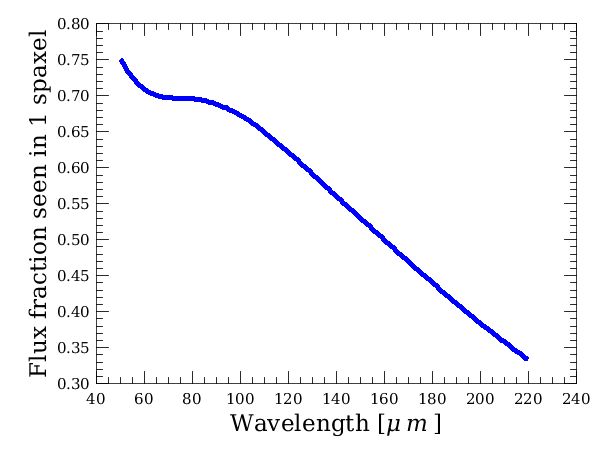The relative spectral response function (RSRF) gives the combined system efficiency including filter transmission and detector sensitivity. The on-ground measured RSRF, during PACS flight-module black-body measurements is displayed in Figure 4.4. Besides the overall trend of the RSRF, one of the most important issue is to calibrate with a high accuracy the ripples on short wavelength scales. It is particularly important for faint line detection and identification. The RSRF is very stable over the mission lifetime, however, an updated version will be made available to PACS observers if it is appropriate.

Figure 4.4. PACS spectrometer relative spectral response function measured on-ground, colored signs show the key wavelengths measured in the calibration block of every single observation.
The wavelength dependence of the absolute response of each spectrometer pixel is characterised by an individual relative spectral response function. Since this calibration file has been derived from the extended laboratory black-body measurements, its application to point sources requires additional diffraction corrections. The required correction curve is provided in Figure 4.5; however, partly extended sources may consequently show deviating spectral shapes according to their size and morphology (see more in Section 4.10).
In the data reduction environment (HIPE), this curve is available as a calibration product. For a point-source, the flux derived from the central spaxel of the 5x5 intergral-field array has to be multiplied by the correction factor at the corresponding wavelength. This flux represents the total line flux of the source, however, for (slightly) extended sources the total flux must be extracted from the 25 spaxels even if S/N is lower for the neighbouring spaxels comparing to the central one.
